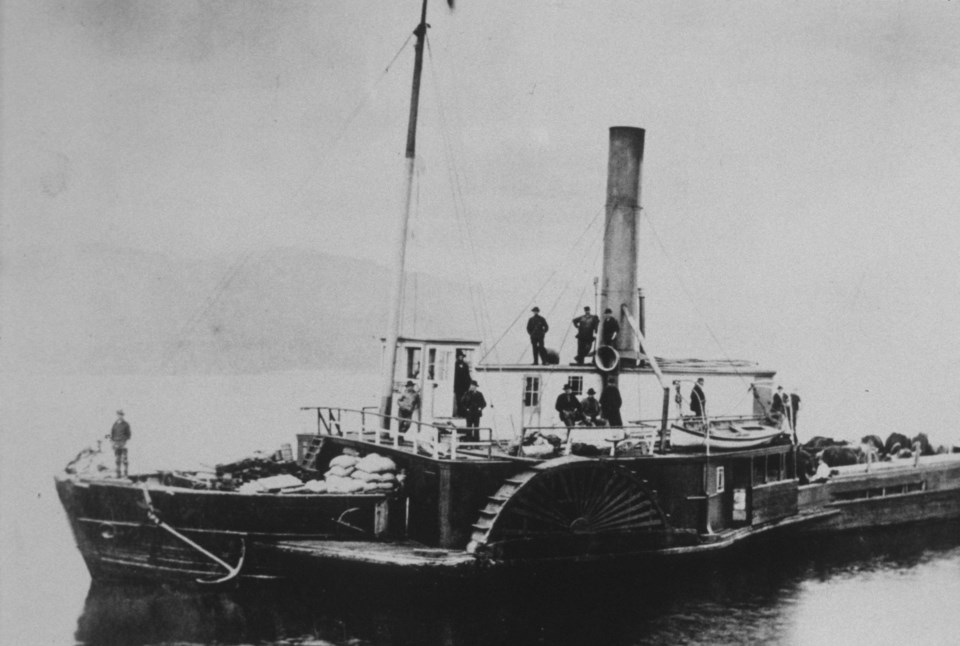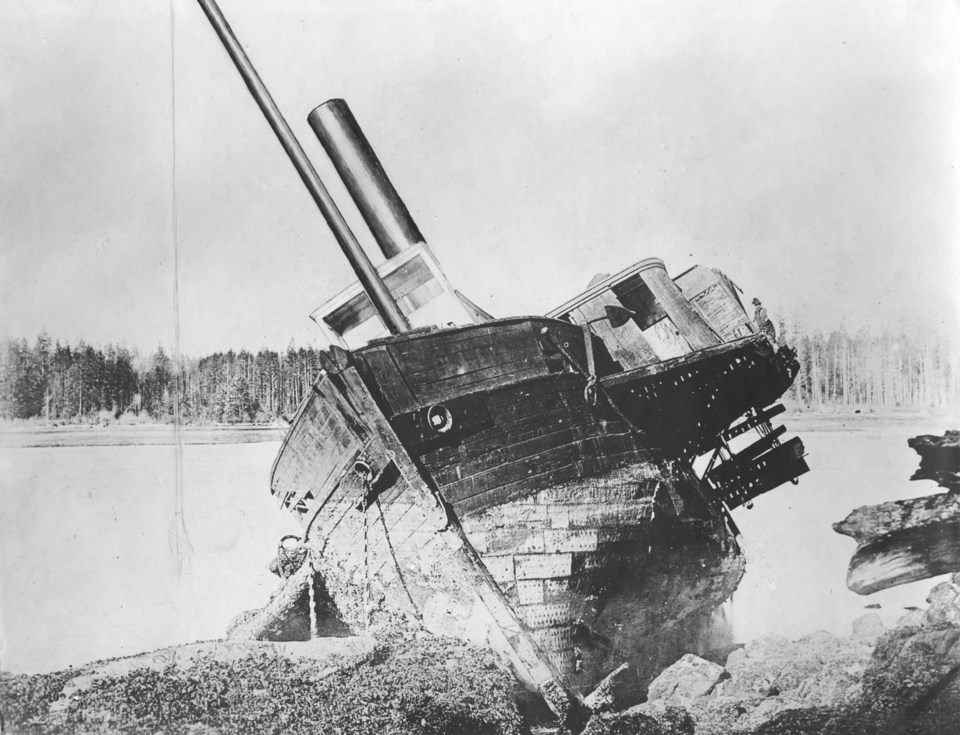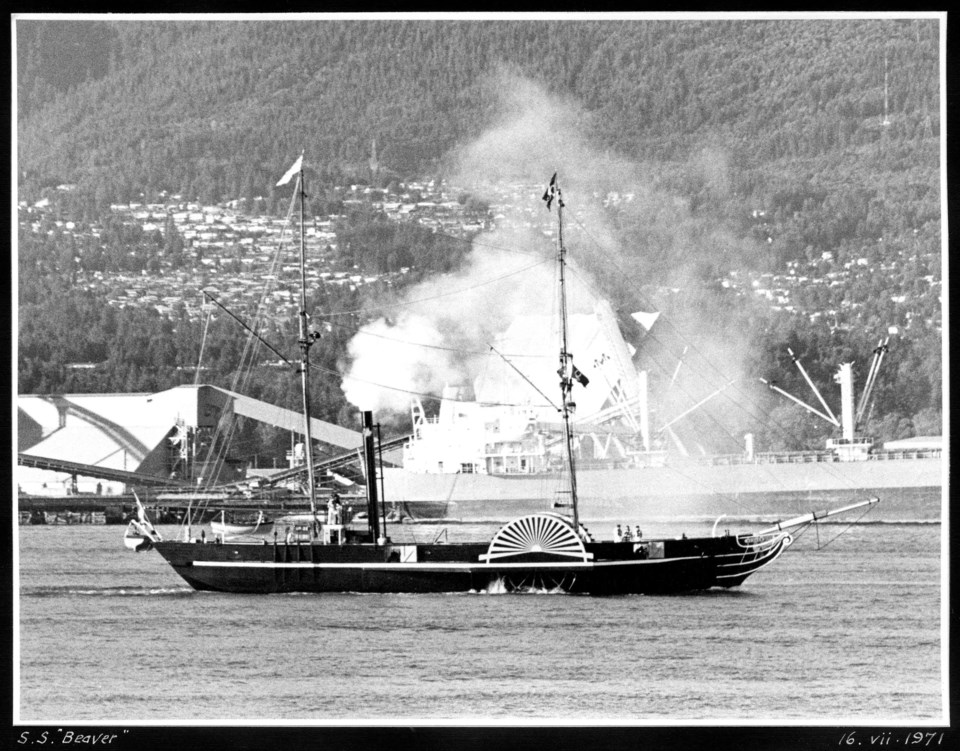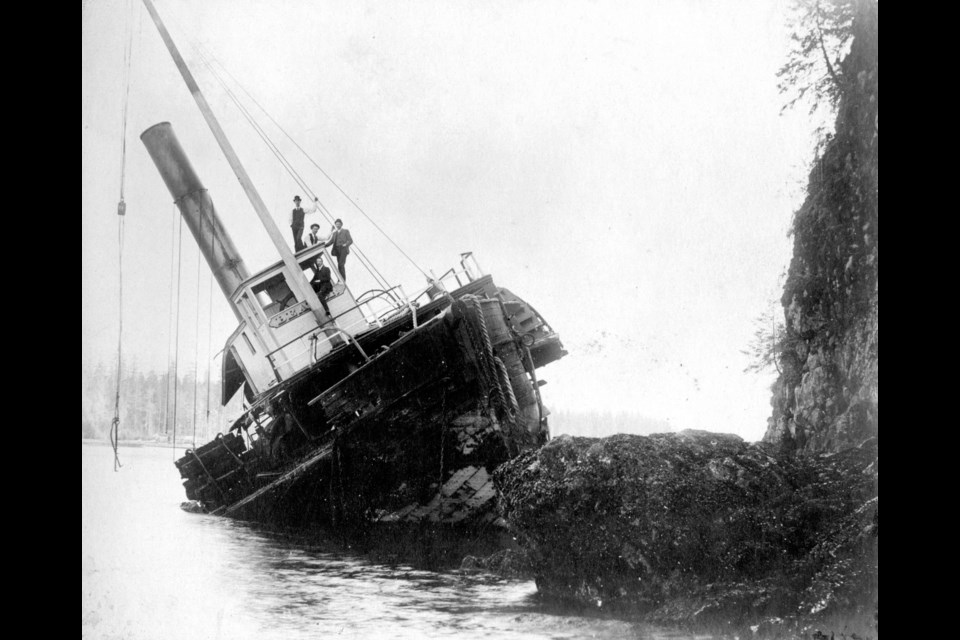There are few other ships so well known by Vancouverites as the Pacific Northwest’s first steamship, the S.S. Beaver.
As B.C.’s first steamer the Beaver had plenty to do when she first arrived at Fort Vancouver on April 10, 1836. Built at the Blackwall Yard in London for the Hudson’s Bay Company in 1835, the Beaver sailed across the Atlantic and made the treacherous journey around Cape Horn. It was only when she was in Vancouver that her paddles, boilers and engines were shipped and eventually connected.
For the next 53 years the Beaver proved to be one of B.C.’s hardest working ships, initially serving as a floating trading post that opened up remote parts of B.C.’s coast for fur trading. After 17 years, the Hudson’s Bay Company brought in a second, more powerful ship and Beaver was relegated to transport passengers and cargo.

The Beaver was later employed by the Royal Navy to chart the British Columbia coast from 1863 to 1870. Then the Beaver was sold to a consortium that became the British Columbia Towing and Transportation Company in 1874 and towed barges, log booms and sailing vessels.
This as it turns out would be the last stage of the Beaver’s life. On the night of July 26, 1888, the Beaver’s hull smashed into the rocks by Prospect Point in Stanley Park.
It’s difficult to say exactly what caused the Beaver to run aground but according to the Maritime Museum of British Columbia (MMBC) it could have been due to strong winds, foggy conditions, or an substantially inebriated crew.
“A Vancouver pioneer named Simson reported [...] the Beaver’s Captain Marchant was “an old drunk” and that the crew “were all drunk the night the Beaver went on the rocks.”

Another steamship, the S.S. Muriel, came to the Beaver’s rescue, but was unable to remove her from the rocks. Luckily, all of the crew managed to get ashore safely, and the only casualty was the old ship itself.
The Beaver remained perched and rotting there on the rocks for four years, becoming a popular destination for Vancouverites who stripped many artifacts off the boat. Those artifacts, along with the Beaver’s original anchor, paddlewheel shaft, and boiler can be found in the collection of the MMBC to this day.
The wreck finally slipped beneath the waves in July 1892 when the wake of the passing steamer Yosemite struck it. Though not much is left of the Beaver today the wreck site is currently used to train divers in underwater archeology techniques.
The Beaver II
It turns out though that British Columbians just couldn't get enough of the Beaver. Seventy-four years after the mast of the Beaver sank out of view, it was announced that a replica of the ancient side-wheeler would be built in 1966.
A project of the Royal Canadian Navy, the replica was built from an ammunition carrier for the 1966 centennial of the union of the colonies of Vancouver Island and mainland British Columbia.

After 10 months of work the carrier was turned into an exact look-alike of the old Beaver. According to B.C. historian Tom Paterson the second ship to carry this famous name became a hit at the 1966 festivities.
From there Beaver II was owned by many different hands and underwent several restorations for events like B.C.’s 150th anniversary in 2008 and the 2010 Olympics. Then the Beaver II was moored and left to sit idle in Cowichan Bay. She sat there until, on May 7, 2014, she too slid beneath the waves.
In the summer of 2021 a B.C. diver visited the wreck of the Beaver II and brought back these ghostly images of it sitting upright 120 feet below the surface.
“Steam that built Vancouver” is a historical series covering the history of steam-powered machines that had an important role in creating Vancouver as we know it today.




